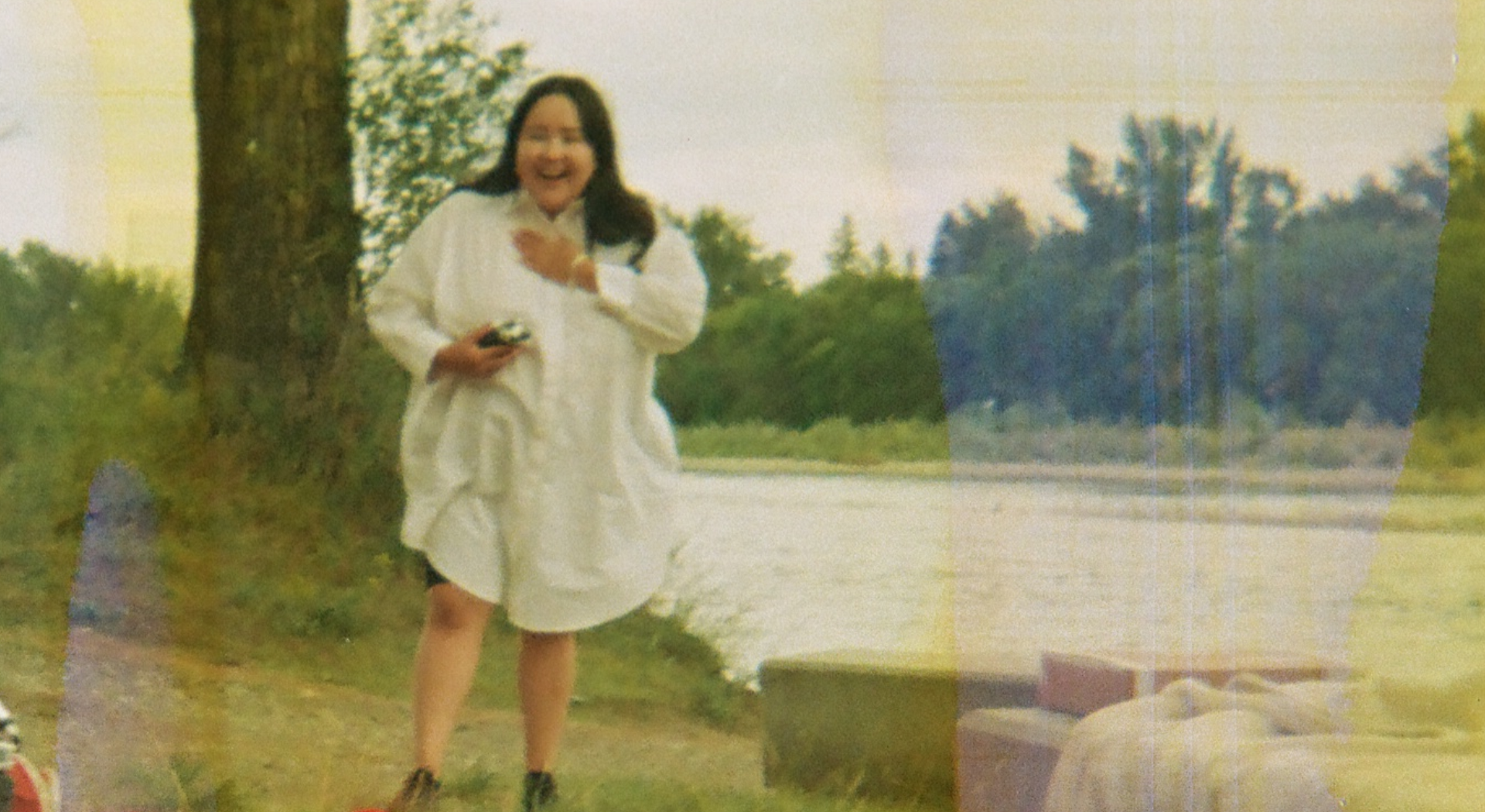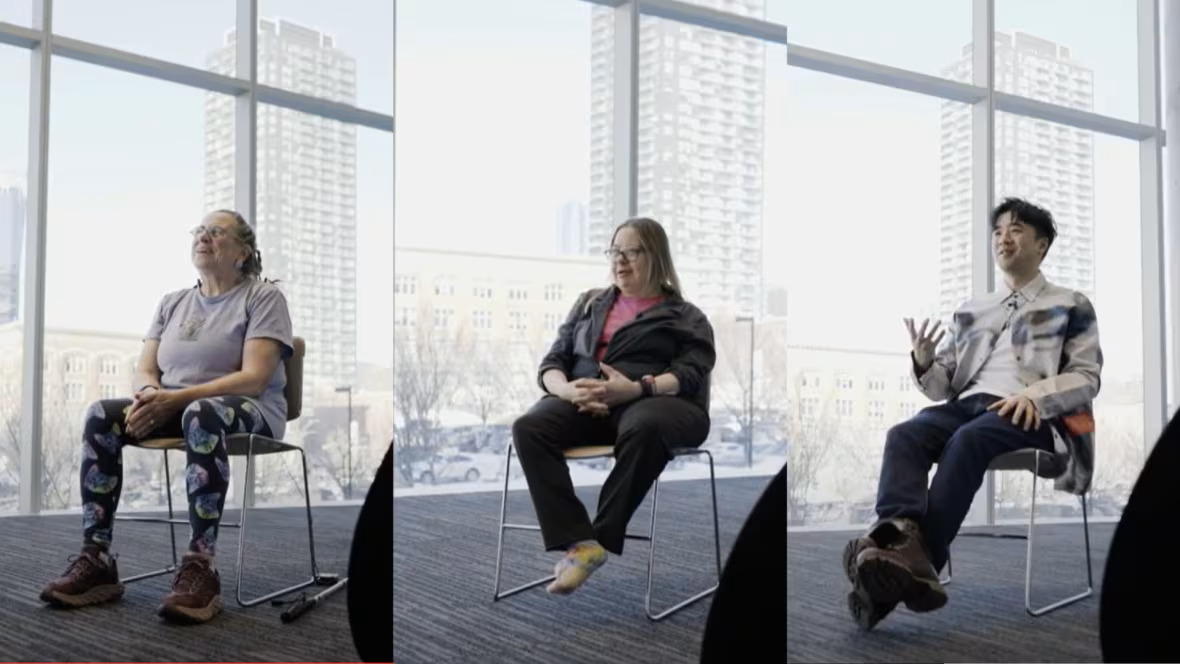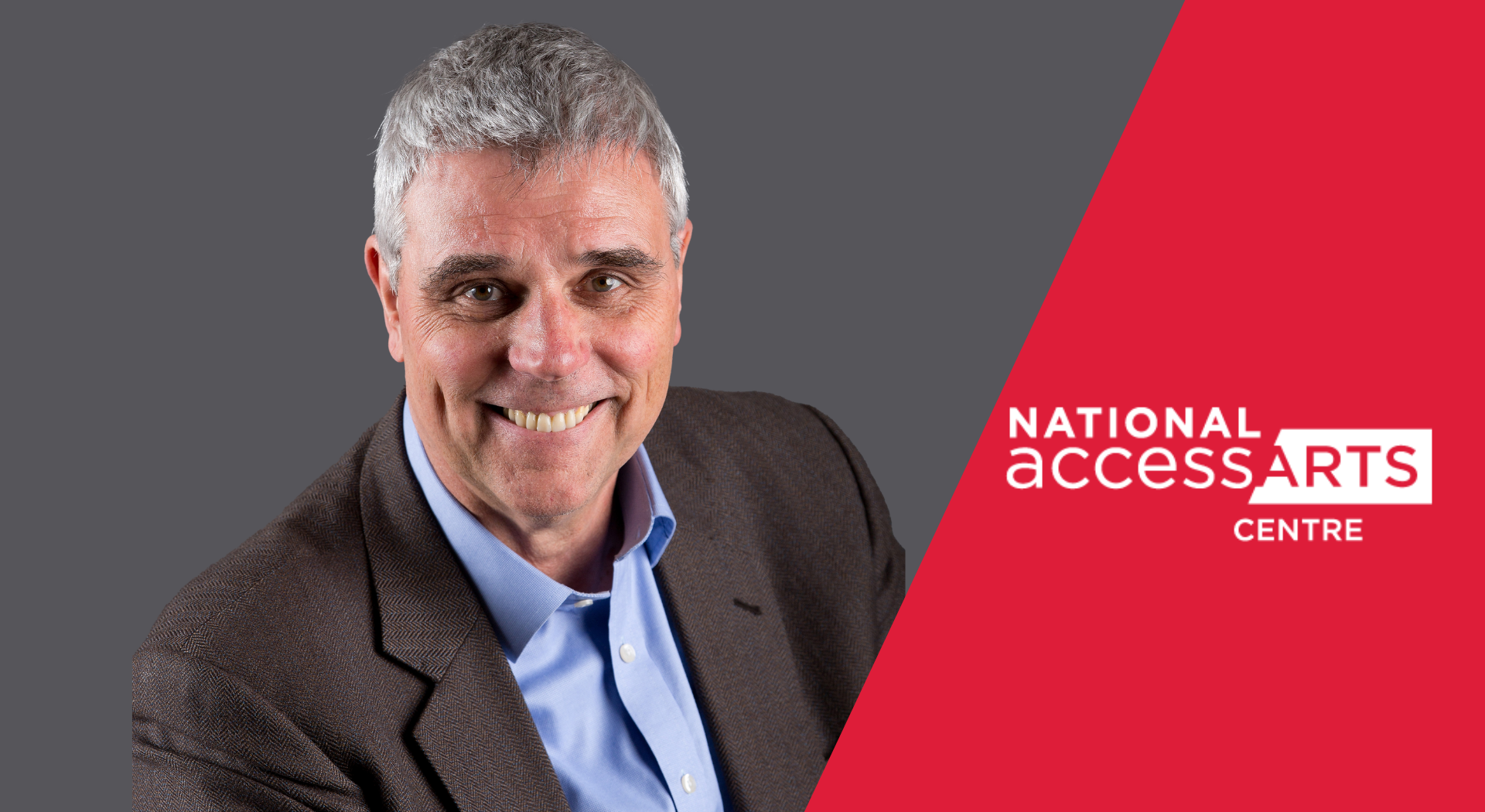Richelle Bear Hat is a First Nations artist with Blackfoot and Cree heritage. The Calgary-based artist’s work investigates family relationships and the types of knowledge that can be passed down through them. Lately, she’s been thinking about mentorship, and what it means for people working in collaborative environments to learn not only from an instructor but from each other.
“Mentorship is really important to me because I’ve worked with so many of my family members in my own artistic practice. The strongest mentors in my life acknowledge that even though they’re older and they’ve gained more life experience, they can learn from me as well. My journey through life is just as valid and important as theirs.”
Richelle Bear Hat, Special Projects Facilitator, NaAC
This idea of mutual mentorship is a concept that Richelle brings to the studio as an artist, instructor, and more recently, as Special Projects Facilitator at the National accessArts Centre. She’s responsible for coordinating projects with groups as large as 80 plus people in cities across Canada. In this blog post, Richelle shares some of the techniques she’s learned work best when working with ensembles—especially in remote situations.
Best practices for working with ensembles
Create a group agreement
At the outset of any project, it’s important to establish ground rules for everybody in the group, including the facilitators, says Richelle. Take the time to find out what everyone needs to feel safe, comfortable, and free to contribute their ideas, especially if you’re investigating sensitive themes or topics. Consider what it means to be a participant in a project, and recognize that passing can be a valid form of active participation.
“There can be such pressure, especially over Zoom, to speak up or appear engaged,” Richelle says. “If a participant chooses to pass, or if they’re not ready to share, that’s okay.”
Listen more than you speak
Sometimes, it can take a while for people to organize their thoughts, says Richelle. Knowing when to speak and when to listen is a lesson she has learned throughout her life.
“I’m very lucky that the mentors and elders I’ve worked with have provided me with a lot of space just through listening,” she says. In the studio, Richelle tries to provide the same courtesy to the artists she works with:
“I try to be mindful of the silence and let things sit, especially on Zoom. It’s okay for the room to be silent for a moment as people are thinking.”
Persons with Developmental Disabilities Program
Within each ensemble, there are three roles that can help move a project forward, according to Richelle.
- She calls the first one the structure keeper. This person makes sure the project is on track and that the group is getting everything done that needs to be done.
- Next is the investigator. This person asks questions of the group to draw out their thoughts and feelings.
- Last is the mirror. They source images and examples, and take notes to reflect back on what the artists have accomplished throughout the project. This helps display the strengths of each artist and validate their individual artistic practices.
These peer roles can be assigned at the beginning or allowed to emerge as the project unfolds, says Richelle.
For more facilitation techniques, check out “Best Practices for Creating Artist-led Programs and Events”.



